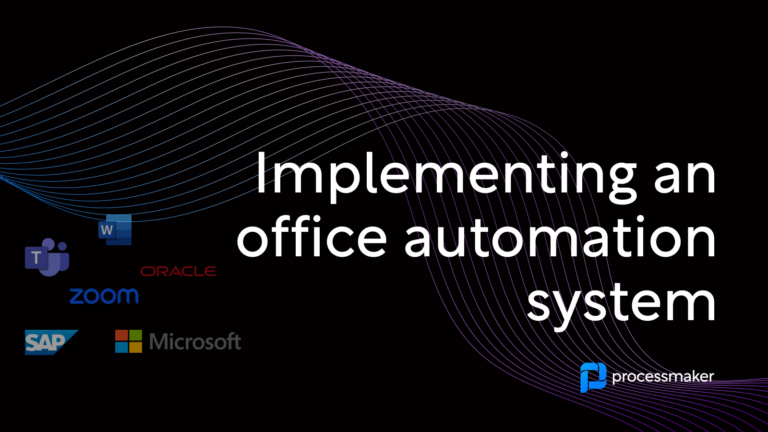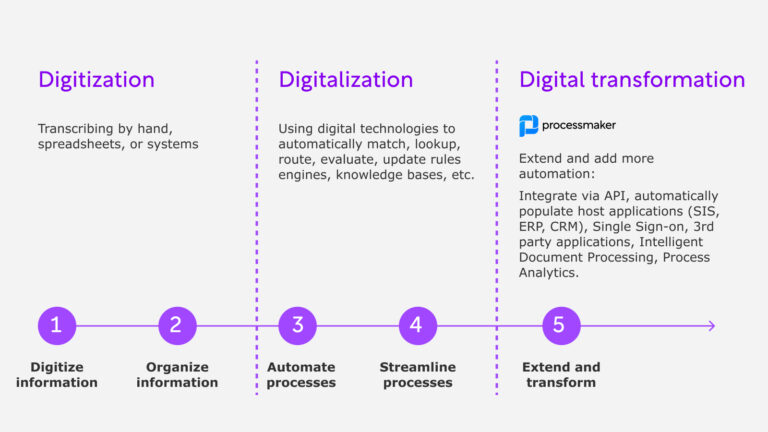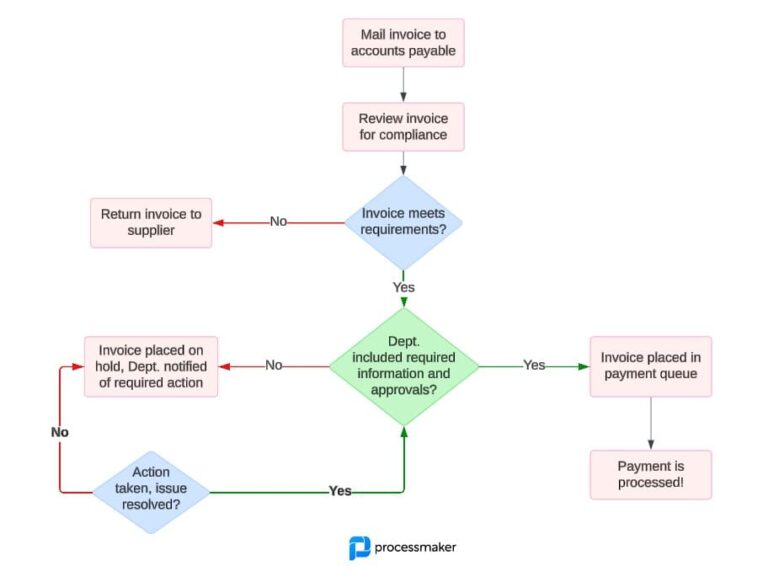Anyone who has worked in a disorganized company knows the symptoms. Requests take forever to be approved because they are not passed on to the right people if they manage not to get lost in a pile of papers first. Tasks are not completed because no one knows where to find the information they need. When a mistake occurs, everyone points fingers because no one knows who was accountable. As a result of all of the problems at a lower level, company strategy cannot be implemented because leadership and employees are not aligned.
All of these symptoms cause frustration for the company as a whole. Without standardized and well-documented internal processes, each level of your company suffers. Process mapping is the first step to adding clarity to your company’s processes. By depicting what tasks and events occur during an entire process, process maps provide valuable insight into a workflow for the entire company. Simply having a picture of what goes on in a process helps promote efficiency and accountability throughout the entire organization.
So how exactly does process mapping help organize your company from bottom to top?
Standardizing internal processes
To begin mapping your process, you need to have a solid grasp on how that process runs from beginning to end. This means that the process cannot change with each request made. Therefore, it is necessary to talk to each stakeholder in the process to find out what occurs during the process and in what sequence. Then, everyone involved needs to find out what the standard course of the process should be and agree to follow through with it.
Mapping the process and making it available to stakeholders further enforces the standard process across all levels. When everyone in the company knows how the entire workflow is supposed to run from beginning to end, it lays the groundwork for better collaboration between workers, smoother information flows and alignment between employees and leadership.
Promoting collaboration between team members
Teams struggle when they do not understand what their common goal is. A goal could be anything – getting a leave request approved, producing a good, selling an item or any matter of things. However, if your team does not have a clear vision of what the outcome of their tasks should be, then the goal gets lost in the process. In the best-case scenario, it takes a prolonged amount of time to produce the outcome, and in the worst case, nothing is shown for the work put in.
Process maps help orchestrate teams by making it clear what the common goal is and the steps it takes to get there. By knowing everyone’s role throughout the entire process, team members know who to go to for information they need. Additionally, the correct people are held accountable when something goes wrong, which aids in avoiding problems in the future. Spelling out everyone’s part in a workflow with a process map helps team members work together to accomplish tasks efficiently.
Aligning all levels with company strategy
One of the major pain points of company leadership is galvanizing each level of the organization to align with strategy. It is one thing to define company strategy at the upper levels, but a different thing entirely to get the entire organization aligned with that strategy. When there is no visibility into processes, not only is it unclear how to achieve goals set as part of company strategy, but it is also hard for leadership to have clarity into how their lower levels operate. Without synchronizing processes with leadership and team members, companies are doomed to stagnate instead of moving ahead strategically.
Process maps help align entire organizations around company strategy by giving leadership insight into how tasks are completed in the real world. Often, when leadership decides to follow a particular strategy, aligning lower levels to that strategy is made difficult by real-world restrictions that leadership is unaware of. However, by collaborating with employees about how the process is carried out, in reality, using a process map, all levels can carry out company strategy effectively. Leadership and employees can design a process map to ensure that the tasks and outcomes of a process are aligned with strategy. Therefore, there is a collective effort throughout the entire organization to achieve long-term goals.
Optimizing company-wide processes
Another one of the major downsides of unmapped processes is that effort to improve the way tasks are carried out is often slow or nonexistent. When there is no clarity into processes, it is hard to keep track of what mistakes happen and at what point in the workflow. Without this information, mistakes and disruptions are likely to keep happening as employees have no insight into how the process should be running. As a result, processes are doomed to remain inefficient.
Since process maps represent a standardized version of a workflow, employees only need to take a glance at the process map to see how things should be working in an ideal world. This way, exceptions are much easier to identify when they occur. Additionally, process maps also help employees improve workflows by making areas for improvement more clearly. Employees can identify the points in the workflow that experience the most exceptions and make necessary improvements accordingly. As process maps are easy to modify, management can enforce changes when they happen. Over time, organizations can optimize processes as more improvements are made.
The Takeaway
Process maps help organizations become organized. Mapping out key tasks and actions taken in each workflow in your company creates a valuable resource that employees at any level can use. By standardizing processes in the form of a process map, both leadership and staff are held accountable for their part in a workflow, aligning the organization with high-level strategy and paving the way for workflow optimization. To get started mapping the processes at your company, check out some of our whitepapers or other posts on our blog.





